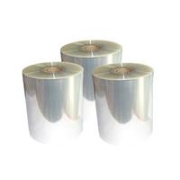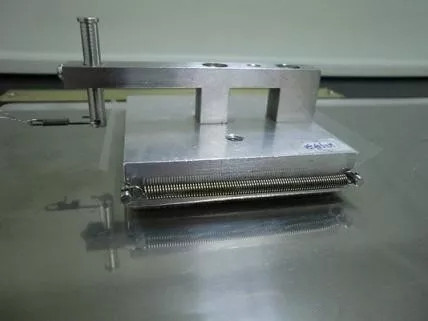Source: Link Testing Instruments Co.,Ltd.

In the cigarette packaging process, the friction between the cigarette film and the device is both resistance and power, and the slippery performance of the cigarette film is directly related to its friction coefficient. The friction coefficient can be divided into static friction coefficient and dynamic friction coefficient. The static friction coefficient is the friction coefficient when two objects have a relative movement tendency, but there is no relative movement. The coefficient of kinetic friction is the coefficient of friction when two objects move relative to each other.
In order to be suitable for the needs of high-speed packaging equipment, an appropriate coefficient of friction is very important for cigarette packaging. According to the cigarette packaging technology, the sliding properties of the inner surface and the outer surface of the cigarette film have different requirements. In the cigarette packaging process, the inner layer of the cigarette film is in contact with the cigarette box. In order to facilitate accurate positioning between the cigarette packet and the cigarette film and ensure the compactness of the cigarette package, the inner surface of the cigarette package needs to have a relatively high static friction coefficient. As for the outer surface of the cigarette pack, since it is in close contact with metal parts such as the lower film channel, the forming wheel groove, the folding plate, the soldering iron, the guide rail and so on, and is in a smooth sliding state, it needs to have a suitably low coefficient of friction. Moreover, during the production process, most of these metal parts are operated under high temperature conditions (generally above 50°C), and the molecular motion state of the polymer material used in the smoke film begins to be active, and the viscoelasticity changes. As the temperature rises, the commonly used lubricants begin to become sticky, exhibiting intermittent slip and sticking, which affects the smoothness of the cigarette film operation, and further affects production efficiency and quality.
Before entering the production link formally, through the test of the film friction coefficient, the friction coefficient can be quantitatively evaluated, and the production risk can be minimized. So how to test the friction coefficient of the smoke film under high temperature production conditions?
Test instrument: Link Testing Instruments Co.,Ltd. LTMXS-06 friction coefficient tester, which is professionally suitable for testing the dynamic and static friction coefficient of plastic films, sheets and other related materials at room temperature and high temperature(customization), and meets ISO8295, ISO 8150-2 , GB10006, ASTM D1894 and many other international and national standards. The instrument uses a high-precision sensor with a test accuracy of 0.5. It is equipped with a wide-range, high-precision temperature control device, which can easily test samples at different temperatures. Both the test bench and the test slide have undergone demagnetization treatment and remanence detection, which effectively reduces the system error and improves the test accuracy.
Laboratory environment: 23℃, 50%RH
Test material: BOPP smoke film
Test steps:
1) Take an appropriate amount of BOPP smoke film with a flat surface, no creases, and no pinholes, and cut it into a 63 mm × 80 mm rectangular sample. Do not touch the test surface with your hands during the sample cutting process.
2) Clamp the specimen into the upper sliding block with the outer side facing outward, the test area is 63 mm × 63 mm.

3) Turn on the LTMXS-06 tester, set the test parameters, and set the test temperature to the desired temperature (for example, 40°C), and turn on the heating control.
4) Wipe the equipment steel belt clean with absorbent cotton dipped in alcohol. After the temperature rises to the set temperature and stabilizes, carefully place the slide with the sample on the steel belt vertically, connect the slide with the force sensor with a wire rope, and test the coefficient of friction between the outside of the smoke film and the steel belt.
The LTMXS-06 friction coefficient tester can test the static and dynamic friction coefficients of samples at different temperatures, and effectively predict the smooth running performance of the smoke film under high temperature conditions. In addition to testing the coefficient of friction of plastic films and sheets, it can also test the dynamic and static friction coefficients of paper, cardboard, metal composite belts for communication cables and optical cables, conveyor belts, textiles, adhesive tapes and other related materials.
For more details please visit www.linktesting.org